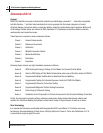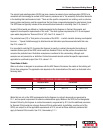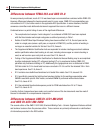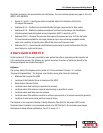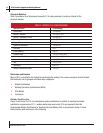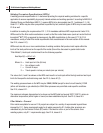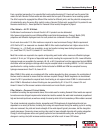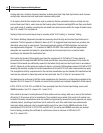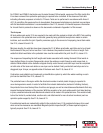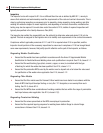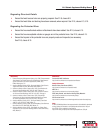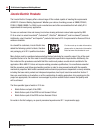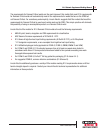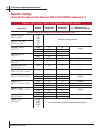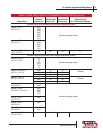
16 D1.8 Seismic Supplement Welding Manual
www.lincolnelectric.com
Cooling rates are a function of several variables, including heat input. High heat input levels result in slower
cooling rates, whereas low heat input levels increase cooling rates.
D1.8 requires that the filler metals to be used in production first be evaluated in tests run at high and low
levels of heat input, that is, under slow and fast cooling rates. Production welding WPSs are then permitted to
use a wide range of variables, providing the calculated heat input levels are within the range of tested values.
See D1.8, clause 6.3.5 and Annex A.
Testing at high and low heat inputs may be casually called “hi/lo” testing, or “envelope” testing.
The Seismic Welding Supplement provides two means by which the high and low heat input tests can be
conducted. The first approach is detailed in Annex A of D1.8. Suggested heat input levels are provided, but
alternative values may be used as well. The second approach applies to FCAW electrodes, and uses the
new supplemental designator “-D” as defined in AWS A5.20:2005. Filler metals with this supplemental
designator are required to be tested at a prescribed high and low heat input level, as well as tested
according to the standard A5 classification test.
Filler metals for Demand Critical welds must meet the requirement of 20 ft•lbf at 0°F when tested in
accordance with the applicable AWS A5 filler metal specification, as previously discussed. Filler metals for
Demand Critical welds are additionally required to be tested at high and low heat input levels in accordance
with D1.8 Annex A, and the welds are required to deliver a minimum CVN toughness value of 40 ft•lbf at 70°F,
assuming the structure is subject to service temperatures of at least 50°F. If not, other requirements may apply.
The strength and ductility requirements for the electrode classification per the standard A5 classification test
must also be achieved on these high and low heat input tests. See D1.8, Table 6.2 and clause 6.3.6.
This testing can be performed by the filler metal manufacturer, the Contractor, or a third party acceptable to the
Engineer. See D1.8, clause 6.3.7. Results on Lincoln Electric products are included in Appendix A of this manual.
E7018, E7018-X, E7018-C3L, and E8018-C3 are exempted from the hi/lo heat input testing, as are solid
GMAW electrodes. See D1.8, clause 6.3.5.1 and 6.3.5.2.
Filler metals to be used in making Demand Critical welds must also comply with one or more of the methods
offered by D1.8 to ensure lot-to-lot consistency. Three methods are provided. First, each lot of material can
be tested. Secondly, manufacturers who are audited and approved by various third party agencies can supply
untested product, providing at least three lots of material for each filler metal trade name and diameter
have been tested, and such a test is repeated within every three years. Finally, SMAW electrodes of the
classification E7018, E7018-X, E7018-C3L and E8018-C3, as well as solid GMAW electrodes, are exempt
from lot testing, providing the certificate of conformance shows a minimum of 20 ft•lbf at 0°F.
See D1.8, clause 6.3.8.



